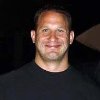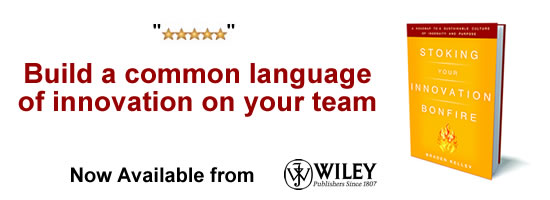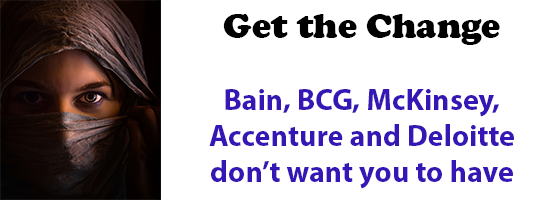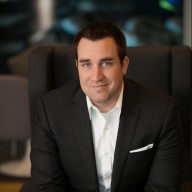
GUEST POST from Chateau G Pato
In a competitive marketplace, understanding the voice of the customer is crucial for innovation and sustained business growth. Traditional methods of gathering customer feedback, such as surveys and focus groups, often fall short in capturing the nuanced and spontaneous nature of customer experiences. In this article, we explore innovative ways to gather customer feedback and illustrate their effectiveness through two compelling case studies.
Leveraging Social Media Listening
Social media offers a vast river of unsolicited, real-time customer feedback. Companies can tap into this stream to discern customer sentiments, identify emergent trends, and detect potential issues before they escalate.
Case Study 1: Starbucks
Starbucks, a global coffeehouse chain, harnesses the power of social media listening tools to refine its customer experience. By monitoring platforms like Twitter, Facebook, and Instagram, Starbucks captures real-time reactions to its products, services, and marketing campaigns.
For instance, Starbucks introduced the Unicorn Frappuccino, a limited-edition beverage, that took social media by storm. The Starbucks team monitored hashtags, comments, and reviews, quickly identifying common themes and sentiments. Customers loved the drink’s vibrant appearance but there was mixed feedback on its taste. With this information, Starbucks promptly engaged with their audience, adjusting their messaging to emphasize the drink’s adventurous and whimsical nature rather than its flavor profile.
The insights gleaned from social media listening not only helped Starbucks understand customer preferences but also enabled the company to engage with customers directly, showing appreciation for their feedback and fostering a sense of community.
Utilizing AI Chatbots for Interactive Feedback
AI-driven chatbots are another innovative way to gather customer feedback. These intelligent agents can engage customers in natural, conversational dialogue, collecting detailed and context-rich feedback without the constraints of formal surveys.
Case Study 2: Amtrak
Amtrak, America’s national rail operator, implemented an AI-powered chatbot named “Julie” to enhance the travel experience and gather valuable customer insights. Julie assists passengers with ticket bookings, schedule inquiries, and travel disruptions. Beyond these functions, Julie is programmed to ask customers about their travel experience upon completion of their interaction.
For example, if a passenger inquires about train delays, Julie might follow up with questions about the overall travel experience, such as the comfort of seating, cleanliness of the train, and the quality of customer service. This conversational approach allows Amtrak to capture specific, actionable feedback in real time.
Furthermore, Julie’s AI capabilities enable her to analyze the sentiment behind the responses, flagging particularly negative or positive interactions for further review by human agents. This dual-layer feedback mechanism ensures that critical issues are swiftly addressed while also recognizing aspects of the service that delight customers.
The implementation of Julie has provided Amtrak with a continuous stream of high-quality feedback, allowing the company to make informed decisions about service improvements and operational adjustments.
The Role of Gamification in Feedback Collection
Gamification, the application of game-design elements in non-gaming contexts, offers a dynamic way to engage customers in the feedback process. By making feedback collection an enjoyable and rewarding experience, companies can significantly increase participation rates and the quality of the insights gathered.
Case Study 3: Duolingo
Duolingo, the language-learning app, uses gamification to motivate users to share their learning experiences and provide feedback. The app incorporates points, badges, and leaderboards to encourage regular usage. Periodically, Duolingo invites users to complete short, in-app surveys or participate in feedback challenges to earn additional rewards.
These gamified feedback mechanisms not only enhance user engagement but also provide Duolingo with a steady stream of user insights. For instance, when Duolingo launched a new feature, the company implemented a feedback challenge where users could earn special badges by completing targeted feedback tasks related to the feature. The responses helped Duolingo understand the feature’s impact, identify any usability issues, and gauge overall satisfaction.
By turning feedback into a game, Duolingo ensures that users are more willing to participate and more honest in their responses, resulting in richer and more reliable data.
Conclusion
In an era where customer preferences and expectations are constantly evolving, it is paramount for businesses to innovate in their approach to gathering feedback. Methods like social media listening, AI chatbots, and gamification provide richer, more immediate insights than traditional approaches.
The success stories of Starbucks, Amtrak, and Duolingo underscore the power of these innovative techniques. By meeting customers where they are and transforming the feedback process into a value-added interaction, companies can foster stronger relationships with their customers, drive meaningful improvements, and maintain a competitive edge.
Finally, innovation should permeate every aspect of a business, including how we listen to and learn from our customers. By embracing new technologies and creative strategies, businesses can unlock deeper customer insights and pave the path for continuous improvement and success.
SPECIAL BONUS: The very best change planners use a visual, collaborative approach to create their deliverables. A methodology and tools like those in Change Planning Toolkit™ can empower anyone to become great change planners themselves.
Image credit: Pixabay
![]() Sign up here to get Human-Centered Change & Innovation Weekly delivered to your inbox every week.
Sign up here to get Human-Centered Change & Innovation Weekly delivered to your inbox every week.







 The Jobs-to-be-Done (JTBD) approach offers a unique lens for viewing the people you serve. Instead of looking at the demographic and psychographic factors of consumption, JTBD focuses on what people seek to achieve in a given circumstance. People don’t “hire” products and services because of the demographic they belong to; instead, they employ solutions to get a job done.
The Jobs-to-be-Done (JTBD) approach offers a unique lens for viewing the people you serve. Instead of looking at the demographic and psychographic factors of consumption, JTBD focuses on what people seek to achieve in a given circumstance. People don’t “hire” products and services because of the demographic they belong to; instead, they employ solutions to get a job done. After a week of torrid voting and much passionate support, along with a lot of gut-wrenching consideration and jostling during the judging round, I am proud to announce your Top 40 Innovation Bloggers of 2020:
After a week of torrid voting and much passionate support, along with a lot of gut-wrenching consideration and jostling during the judging round, I am proud to announce your Top 40 Innovation Bloggers of 2020:
 Tom Koulopoulos is the author of 10 books and founder of the
Tom Koulopoulos is the author of 10 books and founder of the 
 Greg Satell is a popular speaker and consultant. His first book,
Greg Satell is a popular speaker and consultant. His first book, 
 Phil McKinney is the Author of “Beyond The Obvious”, Host of the Killer Innovations Podcast and Syndicated Radio Show, a Keynote Speaker, President & CEO CableLabs and an Innovation Mentor and Coach.
Phil McKinney is the Author of “Beyond The Obvious”, Host of the Killer Innovations Podcast and Syndicated Radio Show, a Keynote Speaker, President & CEO CableLabs and an Innovation Mentor and Coach.

 Eric Eskey is a Managing Director at Strategyn, an innovation consultancy. Eric is in the business of creating the future. I aim to use the resources he has – his work, investments, voice, and imagination – to encourage innovation and defeat the hidden forces that resist it.
Eric Eskey is a Managing Director at Strategyn, an innovation consultancy. Eric is in the business of creating the future. I aim to use the resources he has – his work, investments, voice, and imagination – to encourage innovation and defeat the hidden forces that resist it.
 Scott Anthony is a strategic advisor, writer and speaker on topics of growth and innovation. He has been based in Singapore since 2010, and currently serves at the Managing Director of Innosight’s Asia-Pacific operations.
Scott Anthony is a strategic advisor, writer and speaker on topics of growth and innovation. He has been based in Singapore since 2010, and currently serves at the Managing Director of Innosight’s Asia-Pacific operations.



 Nicolas Bry is Orange Startups Studio Founder. He entices Orange employees in engaging as intrapreneurs, bringing their idea to life within Orange business. Nicolas is equally a passionate expert for innovation labs exploring new business. International speaker (TEDx), delivering Masterclasses @Google Academy, and Tech/Business Schools, ISPIM Prize for innovation management, Nicolas is Writer of
Nicolas Bry is Orange Startups Studio Founder. He entices Orange employees in engaging as intrapreneurs, bringing their idea to life within Orange business. Nicolas is equally a passionate expert for innovation labs exploring new business. International speaker (TEDx), delivering Masterclasses @Google Academy, and Tech/Business Schools, ISPIM Prize for innovation management, Nicolas is Writer of 

 Jesse Nieminen is the Co-founder and Chairman at
Jesse Nieminen is the Co-founder and Chairman at 



 Francesco Pagano, Vice President, EMEA Head of Portfolio of Licenses Brands at Fossil Group Europe, is passionate about craft brands, innovation, brand management, brand communication and international business. He is always up for irresistible product concepts, ultimate communication via integrated campaigns and great Italian food.
Francesco Pagano, Vice President, EMEA Head of Portfolio of Licenses Brands at Fossil Group Europe, is passionate about craft brands, innovation, brand management, brand communication and international business. He is always up for irresistible product concepts, ultimate communication via integrated campaigns and great Italian food. Dimis Michaelides is a keynote speaker, author, consultant and trainer in leadership, creativity and innovation. Contact him for a workshop or a presentation at
Dimis Michaelides is a keynote speaker, author, consultant and trainer in leadership, creativity and innovation. Contact him for a workshop or a presentation at  Greg Heist is the Chief Innovation Officer at Gongos, a decision intelligence company.
Greg Heist is the Chief Innovation Officer at Gongos, a decision intelligence company.
 Gijs van Wulfen helps organizations to structure the chaotic start of innovation as author, speaker and facilitator. He is the founder of the FORTH innovation method and author of the innovation bestseller The Innovation Expedition. He was chosen by LinkedIn as one of their first 150 Influencers. Follow Gijs @gijsvanwulfen
Gijs van Wulfen helps organizations to structure the chaotic start of innovation as author, speaker and facilitator. He is the founder of the FORTH innovation method and author of the innovation bestseller The Innovation Expedition. He was chosen by LinkedIn as one of their first 150 Influencers. Follow Gijs @gijsvanwulfen
 Shawn Nason, founder and CEO of MOFI, lives his life with a commitment to make everyone he meets a part of his family. Armed with the gift of discernment, he has the uncanny ability to walk alongside people as they struggle to connect with their deepest passions and engage their most debilitating demons. He challenges the world around him to be fully present, get real, and knock down the barrier that separates the various compartments in their lives.
Shawn Nason, founder and CEO of MOFI, lives his life with a commitment to make everyone he meets a part of his family. Armed with the gift of discernment, he has the uncanny ability to walk alongside people as they struggle to connect with their deepest passions and engage their most debilitating demons. He challenges the world around him to be fully present, get real, and knock down the barrier that separates the various compartments in their lives.


 John Carter has been a widely respected adviser to technology firms over his career. John is the author of
John Carter has been a widely respected adviser to technology firms over his career. John is the author of 
 Ludwig Melik is CEO of Planbox, whose mission is to help organizations thrive by transforming the culture of agile work, continuous innovation, and creativity across the entire organization… Connect with him on LinkedIn or join the conversation by following Planbox on Facebook, Twitter, and LinkedIn.
Ludwig Melik is CEO of Planbox, whose mission is to help organizations thrive by transforming the culture of agile work, continuous innovation, and creativity across the entire organization… Connect with him on LinkedIn or join the conversation by following Planbox on Facebook, Twitter, and LinkedIn.

 Rachel Audige is an Innovation Architect who helps organisations embed inventive thinking as well as a certified Systematic Inventive Thinking Facilitator, based in Melbourne.
Rachel Audige is an Innovation Architect who helps organisations embed inventive thinking as well as a certified Systematic Inventive Thinking Facilitator, based in Melbourne.
 Mick Simonelli is an innovator with 20+ years of implementing change and positive disruption at USAA. As a military veteran, he held transformation roles in numerous military organizations; and as a business executive, he purposely hired vets to help launch numerous innovations as the Chief Innovation Officer for a Fortune 500 company. Mick currently serves as an innovation consultant and can be found at www.micksimonelli.com Follow @MickSimonelli
Mick Simonelli is an innovator with 20+ years of implementing change and positive disruption at USAA. As a military veteran, he held transformation roles in numerous military organizations; and as a business executive, he purposely hired vets to help launch numerous innovations as the Chief Innovation Officer for a Fortune 500 company. Mick currently serves as an innovation consultant and can be found at www.micksimonelli.com Follow @MickSimonelli
 Mitch Ditkoff is the Co-Founder and President of Idea Champions and the author of “Awake at the Wheel”, as well as the very popular Heart of Innovation blog.
Mitch Ditkoff is the Co-Founder and President of Idea Champions and the author of “Awake at the Wheel”, as well as the very popular Heart of Innovation blog.
 Peter Cook leads Human Dynamics and The Academy of Rock, providing Keynotes, Organisational Development and Coaching. He is the author of seven books on business leadership. His three passions are science, business and music, having led innovation teams for 18 years to develop life-saving drugs including the first treatments for AIDS and the development of Human Insulin. Peter is Music and Business editor at Innovation Excellence. You can follow him on twitter @Academyofrock.
Peter Cook leads Human Dynamics and The Academy of Rock, providing Keynotes, Organisational Development and Coaching. He is the author of seven books on business leadership. His three passions are science, business and music, having led innovation teams for 18 years to develop life-saving drugs including the first treatments for AIDS and the development of Human Insulin. Peter is Music and Business editor at Innovation Excellence. You can follow him on twitter @Academyofrock.
 Mukesh Gupta is Director of Customer Advocacy, SAP India Private Limited. He also served as Executive Liaison for the SAP User group in India, and as a Global Lead in Sales & Business Development. He blogs, and shares podcasts and videos, on his site rmukeshgupta.com
Mukesh Gupta is Director of Customer Advocacy, SAP India Private Limited. He also served as Executive Liaison for the SAP User group in India, and as a Global Lead in Sales & Business Development. He blogs, and shares podcasts and videos, on his site rmukeshgupta.com
 Urko Wood helps clients of Reveal Growth find and capitalize on the best opportunities for innovation and growth in their markets. He is one of only a handful of people in North America who are expert practitioners in the breakthrough “jobs-to-be-done” (JTBD) innovation approach that has enabled over 400 of the Fortune 1000 to generate billions of dollars in new revenue and achieve new product success rates of over 80%.
Urko Wood helps clients of Reveal Growth find and capitalize on the best opportunities for innovation and growth in their markets. He is one of only a handful of people in North America who are expert practitioners in the breakthrough “jobs-to-be-done” (JTBD) innovation approach that has enabled over 400 of the Fortune 1000 to generate billions of dollars in new revenue and achieve new product success rates of over 80%.



 Neil Sholay is re-shaping innovation and digital experiences as a Vice President of Digital Innovation for EMEA & JAPAC at Oracle. He leads a curious, multidisciplinary team of thinkers, Ideators, strategists, designers, developers, storytellers, rebels and proud geeks, who are reshaping Innovation and digital experiences. They bring new ideas & business models to life, using co-innovation and rapid prototyping.
Neil Sholay is re-shaping innovation and digital experiences as a Vice President of Digital Innovation for EMEA & JAPAC at Oracle. He leads a curious, multidisciplinary team of thinkers, Ideators, strategists, designers, developers, storytellers, rebels and proud geeks, who are reshaping Innovation and digital experiences. They bring new ideas & business models to life, using co-innovation and rapid prototyping.


